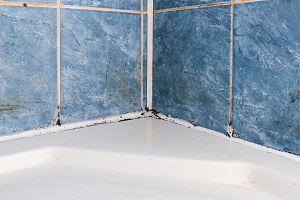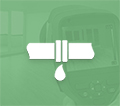Three Regular Causes of Mold in Bathrooms

Because they collect water, the grooves around your tub and shower are a common place for mold to grow. Nevertheless, mold can grow in your bathroom no matter the circumstances, and in some cases, it can be prevented by staying on top of plumbing repairs.
This article goes over three plumbing problems that could cause mold to grow in your bathroom, along with possible fixes.
A Leaky Drain Under Your Sink
If an enclosed vanity conceals the drain under your sink, it might take a while before a leak is discovered. Another problem is a leaky connection in the trap that appears every time you use the sink.
There isn’t a constant flow of water that would result in a glaringly large puddle because the sink only leaks when you use it. Instead, the wood of the vanity or the floor below will absorb the water and continue to be damp. This increases the humidity in the area and causes the wood under the sink to rot.
If you don’t frequently check inside the vanity or if it is filled with grooming supplies or detergent jugs, you might not see anything. Mold may grow inside the vanity or on the wall behind it. While minor mildew in your bathroom is occasionally to be expected, if you see it frequently, mold may develop inaccessibly.
If a hole in the drain is to blame, the problem might be fixed by tightening the trap connection, but you’ll need a plumber to fix it immediately to avoid extensive water and mold damage to the floor and walls.
A Leaking Toilet
It’s possible for your toilet to leak. It might result in mold growth on the wall behind the toilet. If you can identify the source of the leak, it might be a water supply line, a porcelain chip, or a broken toilet seal on the floor.
Condensation on the side of the tank could also cause issues with high humidity. If water is dripping from a tiny crack, you should install a new toilet. If condensation is the problem, your plumber can suggest installing a valve in the supply line that allows hot water to mix in.
Reduced is the temperature difference that leads to condensation in the tank. If you see any small water puddles, call a plumber to inspect the area close to the toilet. Your toilet may need to be replaced if you see that the area under your toilet remains or continues to get wet or damp.
Water Dripping From Your Shower Head
Plumbing problems like dripping faucets are unpleasant because they waste water and can be noisy. Drops from your sink or shower, even if they don’t cause water damage, can still raise the humidity in the area and encourage mold growth.
When the humidity is high, mold can grow anywhere, including on the walls and ceiling. If the back of the shower enclosure gets wet from the dripping shower, mold might even start to grow between the walls. If that happens, you might also need professional mold removal and plumbing repairs.
Fixing leaky faucets as soon as possible is necessary. Controlling humidity in your bathroom also prevents roaches and other pests that love humidity from setting up residence there, which is another benefit.
Mold-Related Symptoms
Exposure to many mold spores can cause allergy symptoms like watery eyes, runny noses, sneezing, itching, coughing, wheezing, difficulty breathing, headaches, and exhaustion. With repeated exposure to mold, a person’s sensitivity may increase, resulting in increasingly severe allergic reactions.
Call The Experts At 1st Choice Plumbing, Flood & Restoration
You can prevent mold, water damage, and bug problems by keeping your bathroom plumbing in good condition. If your faucets or toilets need repair, schedule an appointment with 1st Choice Plumbing, Flood & Restoration. If necessary, we’ll fix leaking pipes, swap out outdated fixtures, or take other measures to keep your bathroom dry.
Speak with one of our plumbing experts immediately by dialing 866-437-0205.









